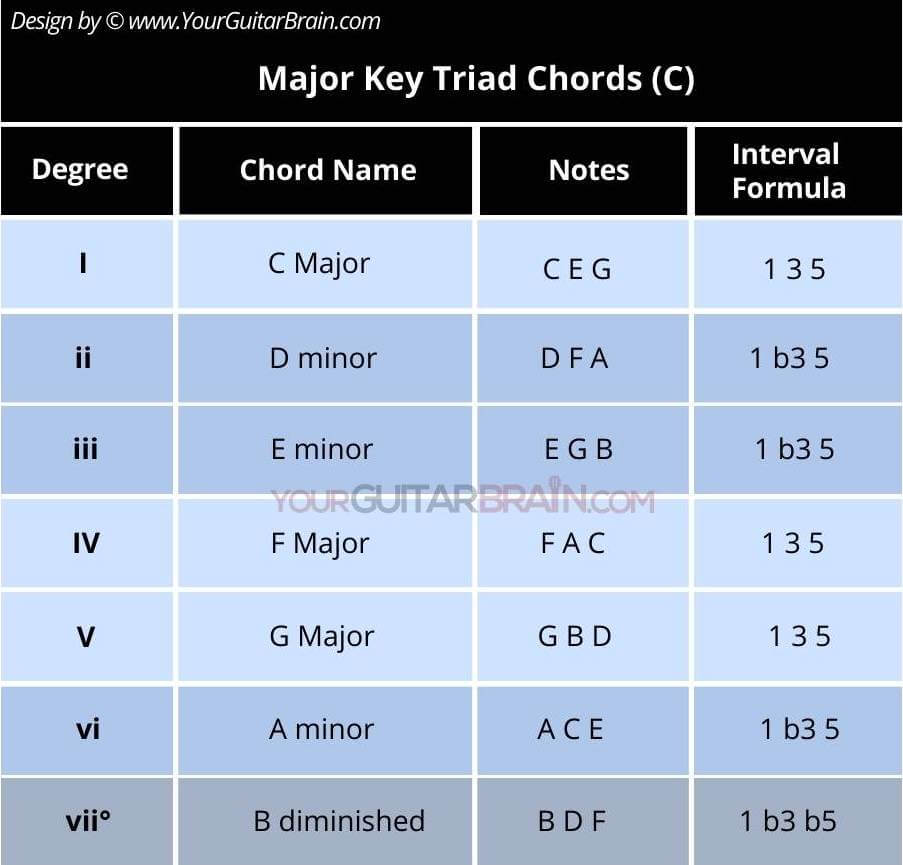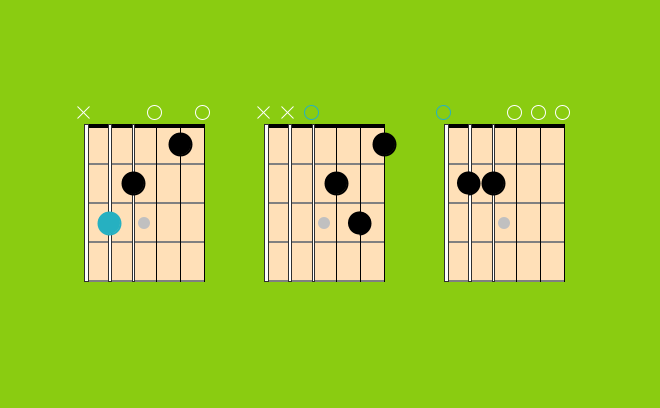Discover how chords in a major key are combined to help you play your favourite songs faster, write awesome chord sequences, and wave goodbye to frustrating musical roadblocks.
- You may also like: Understanding How Chords In Major Keys Are Made (+ Chords In Major Keys Chart)
- You may also like: Chord Interval Chart: How Chords Are Made
- You may also like: Everything You Need to Know About Minor Scale Chords for Beginners
Are you ready to level up your guitar skills? Well, guess what? Understanding the theory behind chord construction is a game-changer.
It all starts with the major scale – the secret sauce of chords. Each of the seven notes in the major scale becomes the foundation for a unique chord, and we call them scale degrees.
Today, we’re diving into the key of C major to show you how it’s done.
Get ready for a quick lesson that’ll have you strumming like a pro in no time!
What is The Major Scale?
The major scale is a seven-note scale that is the foundation of Western music. It is also known as the Ionian mode. The major scale is a diatonic scale, which means that it has all seven notes of the octave with no repeated notes.
The major scale is constructed using a specific formula of whole steps and half steps.
A whole step is the distance between two adjacent notes on a piano keyboard, while a half step is the distance between two black or black keys and the adjacent white key.
Here are the notes in the key of C major:
C Major scale = C – D – E – F – G – A – B
Take a look at the table below, showing you how the chords are constructed in this key:
Pro Tip
Once you know the types of chords found in the C major key, the rules apply to all musical keys. Just change the starting (root) note.

How Major Key Chords Are Made
The chords in a major key are collectively called triads. Triads are three-note chords that are created by layering two notes on top of a root. Each note is an interval of a third away from the next.
The 3rd interval separating the notes in a triad is either a major third (4 semitones apart – M3) or a minor third (3 semitones apart – m3).
Here’s a rundown of how the seven chords in the key of C Major are constructed:
The first chord in the key is made by starting on the C root note and layering two thirds. The first third (between notes C-E) is a major third, and the second (between notes E-G) is a minor third.
The chord formula for a major triad is 1-3-5:
Chord degree 1: C major chord (triad) = C – E – G
We follow the same third layering idea to make the second chord of the major scale. You start on the second note along (D) which acts as the chord root, then add a minor third (F) and and a major third (A). This gives you the D minor chord.
The chord formula for a minor triad is 1-b3-5:
Chord degree 2: D minor chord (triad) = D – F – A
Chord degree 3: E minor chord (triad) = E – G – B
Chord degree 4: F major chord (triad) = F – A – C
Chord degree 5: G major chord (triad) = G – B – D
Chord degree 6: A minor chord (triad) = A – C – E
The last chord in a major key is a diminished chord owing to the fact when you layer two-thirds, they are both minor thirds. This gives us the chord formula of 1-b3-b5.
Chord degree 7: B diminished chord (triad) = B – D – F
Where can I learn more about chords and music theory?
➡️ If you want to learn more about chords and music theory, you can check out my book, which makes it easier to understand and apply Easy Peasy Guitar Music Theory: for Beginners.
➡️ Want a book with all the chords used in your favourite songs in one handy place? Grab the popular Essential Guitar Chords for Beginners book.
➡️ You can also try Chord Crush by Hooktheory, a fun and interactive ear-training app that teaches you to recognise chords by solving puzzles based on real songs.
➡️ Another useful tool is Hookpad by Hooktheory, a songwriting software that helps you create melodies and chord progressions with built-in music theory and AI.
➡️ Finally, another great way to learn chords in songs and basic interval theory is to use EarMaster. It’s an app that teaches you how to hear notes, chords, scales, and rhythms with real music examples.







